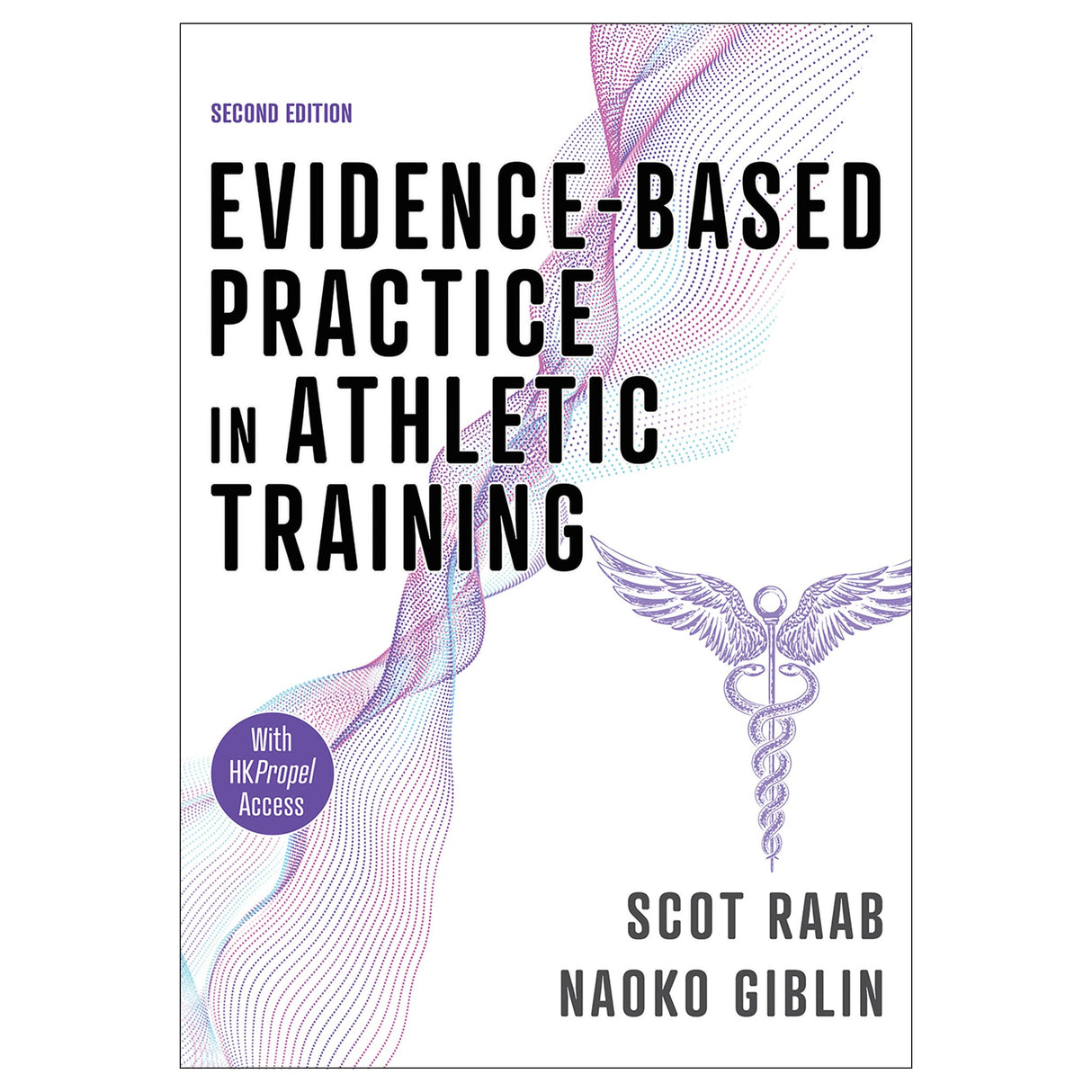Evidence-Based Practice in Athletic Training 2nd Edition With HKPropel Access
Author: Scot Raab, Naoko Giblin
This title will be released on February 16, 2026
$124.95 CAD
The key resource for students studying to become athletic trainers.
Evidence-based practice (EBP) means that all clinical decisions are based on available research studies, and these studies are selected and assessed according to specific criteria that yield evidence of benefit. Evidence-Based Practice in Athletic Training, Second Edition With HKPropel Access, introduces students and practitioners to the basics of EBP and the research design methods that are vital to its implementation.
A resource for students studying athletic training and practitioners, the text is split into three basic parts:
- Part I provides the background information necessary to implement EBP in daily athletic training practice.
- Part II describes different types of research articles, how and where to locate them, and how to critically evaluate them.
- Part III delves into research methods and ethical research practices.
The updated second edition has an expanded depth of content appropriate for master’s level education and includes a new chapter discussing types of artificial intelligence and its use in the field of athletic training. Also included are new case examples that lead readers step by step through the research process, offering the chance for further comprehension and practice. Related online content includes additional case studies and links to research resources.
The most beneficial resource of its kind, this text encourages students and current certified athletic trainers to ask meaningful questions, gain the knowledge they need for excelling in future practice, and rise to the top of their profession.
Evidence-Based Practice in Athletic Training will help current and future athletic trainers provide the most appropriate and effective care for their athletes and clients.
Note: A code for accessing HKPropel is included with all print books.
Audience
Students studying athletic training; professional reference for certified athletic trainers and anyone working in health care fields requiring an understanding of the fundamentals of evidence-based practice.
Part I. Introduction
Chapter 1. Evidence-Based Practice Models
Definitions of Evidence-Based Practice
Five Steps of Evidence-Based Practice
Levels of Evidence
Purpose of Evidence-Based Practice in Clinical Athletic Training
Summary
Chapter 2. Steps in Evidence-Based Practice Research
Step 1: Create a Clinically Relevant and Searchable Question Concerning Your Patient
Step 2: Conduct a Database Search to Find the Best Evidence
Step 3: Critically Appraise the Articles or Evidence for Quality
Step 4: Critically Synthesize the Evidence to Choose and Implement a Treatment
Step 5: Assess the Outcomes by Monitoring the Patient
Search Troubleshooting Tips
Summary
Chapter 3. Research Evaluation
Reliability
Validity
Prevalence Independent Test
Summary
Chapter 4. Evidence-Based Practice in Daily Clinical Practice
Your Practice Based on Evidence
Your Practice Based on Your Clinical Experience
Your Practice Based on Athlete Preferences and Values
Clinical Practice Guidelines
Practice Altruism
Summary
Part II. Critical Appraisal of Evidence-Based Practice
Chapter 5. Appraising Diagnostic Research
Measurement
Types of Study Used in Diagnostic Research
Methods of Appraising Diagnostic Research
Summary
Chapter 6. Prognostic Research
Prognostic Designs
Prognostic Statistics
Appraisal Questions
Summary
Chapter 7. Systematic Reviews and Meta-Analyses
Review of the Evidence Pyramid
Definitions of and Differences Among Filtered Resources
Strengths, Weaknesses, and Processes of Critically Appraised Topics
Strengths, Weaknesses, and Processes of Systematic Reviews
Strengths, Weaknesses, and Processes of Meta-Analyses
How to Find Critically Appraised Topics, Systemic Reviews, and Meta-Analyses
Practice EBP Searches
Summary
Chapter 8. Overview of Outcome Measures
Types of Outcome Measures
Psychometric Properties of Outcome Measures
Communicating Outcomes
Assessing Your Practice
Adjusting Your Practice
Summary
Part III. Research Statistics and Design
Chapter 9. Quantitative Research
Types of Quantitative Data
Quantitative Research Designs
Descriptive Statistics
Common Inferential Statistics
Statistical Power
Summary
Chapter 10. Qualitative Studies
Types of Qualitative Research Studies
Gathering Data
Analyzing Data
Assessing Trustworthiness
Critical Appraisal of Qualitative Research Studies
Qualitative Research and Athletic Training
Summary
Chapter 11. Research Ethics
Ethical Roadblocks
Trustworthiness and Conflicts
Violations Persist
Summary
Chapter 12. Harness Artificial Intelligence in Athletic Training
Types of Artificial Intelligence
Legality of Artificial Intelligence in Health Care
Artificial Intelligence Benefits to Athletic Training
Challenges of Artificial Intelligence in Athletic Training
Summary
All ancillaries are free to adopting instructors through HKPropel.
Instructor guide. Includes a sample syllabus and chapter-specific files with the chapter objectives; summary; suggestions for individual student assignments, lab activities, and class projects; and annotated lists of additional readings.
Test package. Contains 360 questions in true-false, fill-in-the-blank, essay and short-answer, and multiple-choice formats. The files may be downloaded for integration with a learning management system or printed for use as paper-based tests. Instructors may also create their own customized quizzes or tests from the test bank questions to assign to students directly through HKPropel. Multiple-choice and true-false questions are automatically graded, and instructors can review student scores in the platform.
Chapter quizzes. Contains ready-made quizzes (9-10 questions each) to assess student comprehension of the most important concepts in each chapter. Each quiz may be downloaded or assigned to students directly through HKPropel. The chapter assessments are automatically graded, and instructors can review student scores in the platform.
Presentation package. Features more than 200 PowerPoint slides of text, artwork, and tables from the book that can be used for class discussion and presentation. The slides in the presentation package can be used directly within PowerPoint or printed to make handouts for students. Instructors can easily add, modify, and rearrange the order of the slides.
Image bank. Includes most of the figures, content photos, and tables from the text, sorted by chapter. These can be used in developing a customized presentation based on specific course requirements.
Instructors also receive access to all student materials in HKPropel. For Evidence-Based Practice in Athletic Training, Second Edition, this includes a list of resources and additional case studies.





